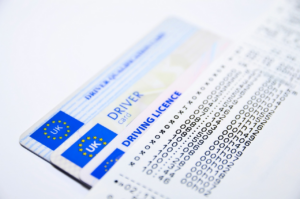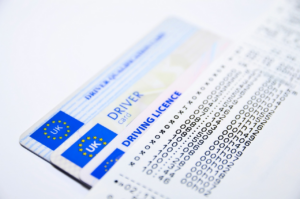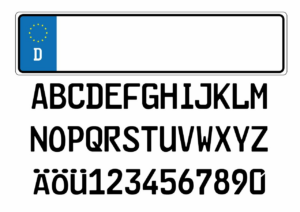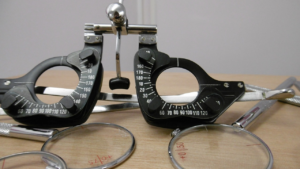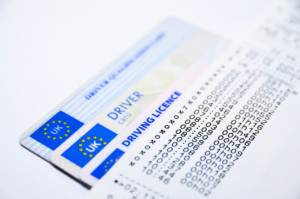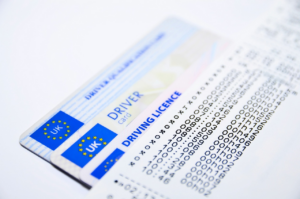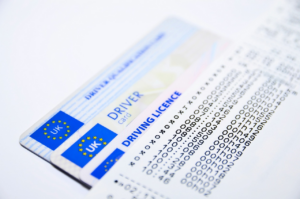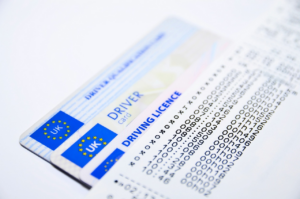Are you looking to improve your visibility on the road? Whether you’re a new driver or have been on the road for years, optimal visibility is crucial for safe and effective driving.
From keeping your windshield clean to adjusting your mirrors properly, there are simple yet essential tips and tricks that can help you see better and avoid accidents.
In this article, we’ll cover six essential tips and tricks for optimal visibility on the road. By following these recommendations, you can drive with confidence and reduce your risk of getting into a collision.
Let’s get started!
Keep Your Windshield Clean
You gotta keep your windshield squeaky clean so you can see the world in front of you with crystal clarity. A dirty windshield can cause a lot of problems while driving, especially during the night or in adverse weather conditions. The dirt, dust, and grime on the windshield can reflect light, making it difficult to see the road ahead. Moreover, it can also cause glare, which can be blinding and dangerous.
Therefore, it’s essential to clean your windshield regularly to avoid these potential hazards. To clean your windshield, you can use a good quality glass cleaner and a microfiber cloth. Spray the cleaner on the glass and wipe it with the cloth in a circular motion. Make sure to clean both the inside and outside of the windshield. You can also use a specialized windshield cleaning solution to remove stubborn stains and marks.
Remember, a clean windshield not only improves visibility but also enhances the overall driving experience, making it safer and more enjoyable.
Replace Worn-Out Wiper Blades
If you notice streaks or smears on your windshield even after using your wiper blades, it may be time to replace them. Worn-out blades can compromise your visibility on the road, especially during rainy or snowy weather.
Luckily, replacing your wiper blades is a quick and easy process that you can do yourself with just a few simple steps.
Signs of Worn-Out Blades
When blades begin to streak or squeak, it’s a sign that they may be worn-out and need to be replaced. This happens because the rubber on the blades wears down over time and loses its flexibility.
Here are some signs that indicate it’s time to replace your wiper blades:
- The blades leave streaks on the windshield, impairing visibility while driving.
- The blades skip across the windshield, leaving patches of water and reducing their effectiveness.
- The blades make a squeaking or chattering noise while in use, indicating that they are not making proper contact with the windshield.
It’s important to replace your wiper blades as soon as you notice any of these signs. Driving with worn-out blades not only reduces visibility but also increases the risk of accidents. Don’t wait until it’s too late to replace your wiper blades.
How to Replace Wiper Blades
Let’s learn how to easily replace your wiper blades so you can keep your windshield clear and safe while driving. First, you need to determine the size of the blades you need. You can check your car’s manual or measure the blades yourself. Once you know the size, you can purchase new blades from an auto parts store or online.
To replace the blades, follow these simple steps:
| Step | Action |
|---|---|
| 1 | Lift the wiper arm away from the windshield |
| 2 | Press the small tab on the underside of the wiper blade to release it from the wiper arm |
| 3 | Slide the old blade off the wiper arm |
| 4 | Slide the new blade onto the wiper arm, making sure it clicks into place |
| 5 | Lower the wiper arm back onto the windshield |
Repeat these steps for the other wiper blade. It’s recommended to replace your wiper blades every 6-12 months, or when you notice signs of wear and tear. By replacing your wiper blades regularly, you can ensure optimal visibility and safety on the road.
Use High-Beam Headlights Effectively
Light up the road ahead of you with your high-beam headlights, illuminating any potential hazards that may be lurking in the darkness. However, it’s important to use them effectively and not blind other drivers. Here are some essential tips to help you use your high-beam headlights safely and efficiently:
-
Know when to use them: High-beam headlights should only be used in rural areas or on highways where there is no oncoming traffic. When driving in the city or suburban areas, switch to low-beam headlights to avoid blinding other drivers.
-
Adjust your high beams: Make sure to adjust your high beams so that they are aimed lower and to the right side of the road. This will prevent the light from shining directly into the eyes of oncoming drivers.
-
Dim your high beams: When approaching oncoming traffic, dim your high beams to low beams to avoid blinding the other driver. When they have passed, you can switch back to high beams.
-
Keep them clean: Make sure to keep your headlights clean and free of dirt or grime that can reduce their effectiveness. A quick wipe with a soft cloth can make a big difference in your visibility on the road.
By following these tips, you can use your high-beam headlights effectively and safely, illuminating the road ahead and avoiding potential hazards. Remember to use them wisely and always be considerate of other drivers on the road.
Adjust Your Mirrors Properly
Adjusting your mirrors properly can greatly enhance your driving experience and make it easier to detect potential dangers around your vehicle. First, adjust your rearview mirror so that you can see the entire rear window and the back of your vehicle.
Next, adjust your side mirrors so that you can see just a sliver of the side of your car. This may seem counterintuitive, but it actually allows you to see more of the road behind you.
When you’re driving, make sure to use all of your mirrors in combination with each other. Check your rearview mirror frequently to keep an eye on what’s happening behind you, and use your side mirrors to check your blind spots before changing lanes or merging.
By taking the time to adjust your mirrors properly, you’ll be able to see more of the road around you, increasing your situational awareness and helping you to stay safer on the road.
Check Your Vehicle’s Lights
You need functioning lights on your vehicle to ensure your safety on the road. Checking your lights regularly is important to ensure they’re working properly.
To check your lights, follow these simple steps to avoid any potential accidents on the road.
Importance of Functioning Lights
One of the most crucial aspects of staying safe while driving is ensuring that your vehicle’s lights are functioning properly. Functioning lights not only help you see the road ahead, but they also help other drivers see you.
Here are some reasons why having properly functioning lights is so important:
-
Improved visibility: Lights serve as a vital tool for increasing visibility while driving, particularly in low-light conditions. Without them, you may have difficulty seeing the road ahead, other drivers, and obstacles in your path.
-
Better communication: Your vehicle’s lights are also important for communicating with other drivers on the road. For example, using your turn signals lets other drivers know your intentions, while flashing your headlights could signal that you’re giving way to them.
-
Avoiding accidents: Having functioning lights can help prevent accidents on the road. If other drivers can’t see you, they may be more likely to collide with your vehicle. Additionally, if you’re driving with headlights that are too bright or too dim, you could be putting other drivers at risk by blinding them or making it difficult for them to see.
In conclusion, taking the time to ensure that your vehicle’s lights are working properly can go a long way in keeping you and other drivers safe on the road. Not only does it improve visibility, but it also helps with communication and accident prevention. So, make sure to regularly check your lights and replace any faulty bulbs to make sure you’re always driving with optimal visibility.
How to Check Your Lights
To ensure your vehicle’s safety while driving, it’s important to know how to properly check the functionality of your lights.
The first thing you should do is turn on your vehicle and walk around it to make sure all of the lights are working properly. This includes your headlights, taillights, brake lights, and turn signals.
If you notice any lights that are not working, you should replace the bulb as soon as possible.
It’s also important to periodically clean your lights to ensure maximum brightness and visibility.
Checking your lights before every drive can prevent accidents and ensure that you are visible to other drivers on the road.
By taking these simple steps, you can ensure that your lights are functioning properly and that you are driving as safely as possible.
Avoid Distractions
Stay alert and focused while driving to ensure your safety and the safety of others around you. One of the biggest distractions while driving is using mobile devices, such as smartphones. It’s incredibly dangerous to text, browse social media, or take calls while driving. Not only does it take your eyes off the road, but it also takes your hands off the wheel and your focus off of driving.
Another common distraction while driving is eating or drinking. Taking your hands off the wheel to grab a drink or snack can be enough to cause an accident. Eating or drinking while driving can also cause spills or messes, which can further distract you from the task at hand. To avoid distractions while driving, stay focused on the road and keep your hands on the wheel at all times. If you need to eat or drink, pull over to a safe location and take a break before continuing on your journey.
Be Mindful of Weather Conditions
Now that you know how to avoid distractions while driving, let’s move on to another essential tip for optimal visibility on the road: being mindful of weather conditions.
When the weather takes a turn for the worse, it’s crucial to adjust your driving style accordingly to stay safe. Here are some tips to help you navigate different weather conditions:
- When driving in heavy rain, slow down and increase your following distance to give yourself more time to react to sudden stops or turns.
- In foggy conditions, use your low-beam headlights and fog lights (if you have them) to increase visibility. Avoid using high-beam headlights, as they can actually reduce visibility by reflecting back at you.
- In snowy or icy conditions, reduce your speed and increase your following distance even more. Use snow tires or chains if necessary.
- During extreme heat, make sure your vehicle’s cooling system is working properly and keep plenty of water on hand to stay hydrated.
Remember, weather conditions can change quickly, so stay alert and be prepared to adjust your driving accordingly. By following these tips, you can help ensure a safer and more comfortable driving experience in any weather.
Regular Vehicle Maintenance
If you want to keep your vehicle running smoothly and avoid potential breakdowns, regular maintenance is key.
Checking items such as oil levels, tire pressure, and brake pads can go a long way in preventing major issues down the road.
By taking the time to perform routine maintenance checks, you can ensure your safety on the road and extend the life of your vehicle.
So, make sure to schedule regular appointments and don’t put off necessary repairs. It’s better to be proactive than to have to deal with a costly and unexpected breakdown.
Importance of Regular Maintenance
Regular maintenance is crucial for ensuring your vehicle runs smoothly and safely. Neglecting your car’s maintenance can lead to serious accidents and costly repairs.
Regular maintenance includes checking the oil level, tire pressure, and brakes, as well as changing the oil and filters at the recommended intervals.
Regular maintenance not only ensures your safety but also extends the life of your vehicle. By keeping your car in good condition, you can avoid breakdowns and expensive repairs. Additionally, a well-maintained vehicle is more fuel-efficient, which can save you money in the long run.
Remember, prevention is always better than cure, so make sure to keep up with your car’s regular maintenance schedule and address any issues as soon as they arise.
What to Check During Maintenance Checks
Make sure you check all the important components of your vehicle during maintenance checks to prevent any potential issues and ensure your safety while driving. Here are some things to keep in mind:
-
Check your tires regularly and ensure that they’re properly inflated. Low tire pressure can lead to decreased fuel efficiency and poor handling.
-
Inspect your brakes to make sure they’re in good working order. Squeaking or grinding noises, or a pulsing brake pedal, may indicate that your brakes need replacing.
-
Check your oil levels and change your oil regularly. Dirty oil can damage your engine and reduce its lifespan.
-
Inspect your battery and cables to ensure they’re in good condition. A weak or dead battery can leave you stranded on the side of the road.
-
Check all your lights, including headlights, taillights, and turn signals, to make sure they’re working properly. This is not only important for your own safety, but also for the safety of other drivers on the road.
By taking the time to perform regular maintenance checks, you can avoid costly repairs and ensure that your vehicle is operating at its best. Don’t neglect these important tasks, as they’re essential for optimal visibility on the road.
Frequently Asked Questions
How often should you replace your windshield wipers?
To ensure optimal visibility on the road, it’s important to regularly replace your windshield wipers. Experts recommend replacing them every 6 to 12 months or as soon as you notice streaks or skipping.
Don’t wait until they start to squeak or chatter, as this could damage your windshield. Additionally, be sure to clean your wiper blades regularly, especially during the winter months when they can become caked with ice and snow.
By following these simple steps, you can help ensure that you always have a clear view of the road ahead.
What is the proper way to adjust your side mirrors?
To properly adjust your side mirrors, sit in the driver’s seat and adjust the mirror so that you can barely see the side of your vehicle.
Then, lean your head to the left until it touches the window and adjust the left mirror so you can barely see the side of your vehicle.
Finally, lean your head to the right until it’s in the center of the car and adjust the right mirror in the same way.
This’ll give you maximum visibility of your blind spots and reduce the chance of an accident.
Remember to check your mirrors frequently while driving to stay aware of your surroundings.
How do you know if your vehicle’s lights are working properly?
To ensure that your vehicle’s lights are working properly, it’s important to periodically check them. Start by turning on your headlights and walking around the car to see if all of them are illuminated.
Additionally, check the taillights, turn signals, brake lights, and emergency flashers. If any of these lights are not working, replace the bulbs as soon as possible. It’s also important to clean the lenses of your lights regularly to ensure maximum visibility.
Lastly, if you notice any flickering or dimming of your headlights, have them inspected by a professional mechanic to determine if there’s an issue with the electrical system.
What are some common distractions to avoid while driving?
To stay safe on the road, it’s important to avoid distractions while driving. Some common distractions to watch out for include using your phone, eating or drinking, adjusting the radio or temperature controls, and talking to passengers.
Remember to keep your focus on the road at all times, and if you need to make any adjustments, pull over to a safe location first. By staying alert and avoiding distractions, you can reduce your risk of accidents and keep yourself and others safe while driving.
How often should you check your tire pressure for optimal visibility on the road?
To ensure optimal visibility on the road, it’s important to regularly check your tire pressure. It’s recommended to check your tire pressure every month or before long road trips.
Proper tire pressure not only improves visibility but also increases fuel efficiency and extends the life of your tires. Low tire pressure can cause your tires to wear down unevenly and can even lead to a blowout while driving.
You can check your tire pressure using a tire pressure gauge or by visiting a gas station with an air pump. Remember that different tires require different levels of pressure, so make sure to consult your vehicle’s manual for the recommended tire pressure.
By regularly checking your tire pressure, you can ensure a safe and comfortable driving experience.
Conclusion
Now that you know these six essential tips and tricks for optimal visibility on the road, make sure to put them into practice every time you get behind the wheel.
Keeping your windshield clean, replacing worn-out wiper blades, using high-beam headlights effectively, adjusting your mirrors properly, checking your vehicle’s lights, avoiding distractions, and being mindful of weather conditions are all important steps to take to ensure that you can see and be seen while driving.
By following these tips, you can significantly reduce your risk of getting into an accident due to poor visibility.
Remember, regular vehicle maintenance is also crucial for optimal visibility on the road, so make sure to schedule regular check-ups and repairs as needed.
With these simple yet effective strategies, you can enjoy a safer and more confident driving experience.












































